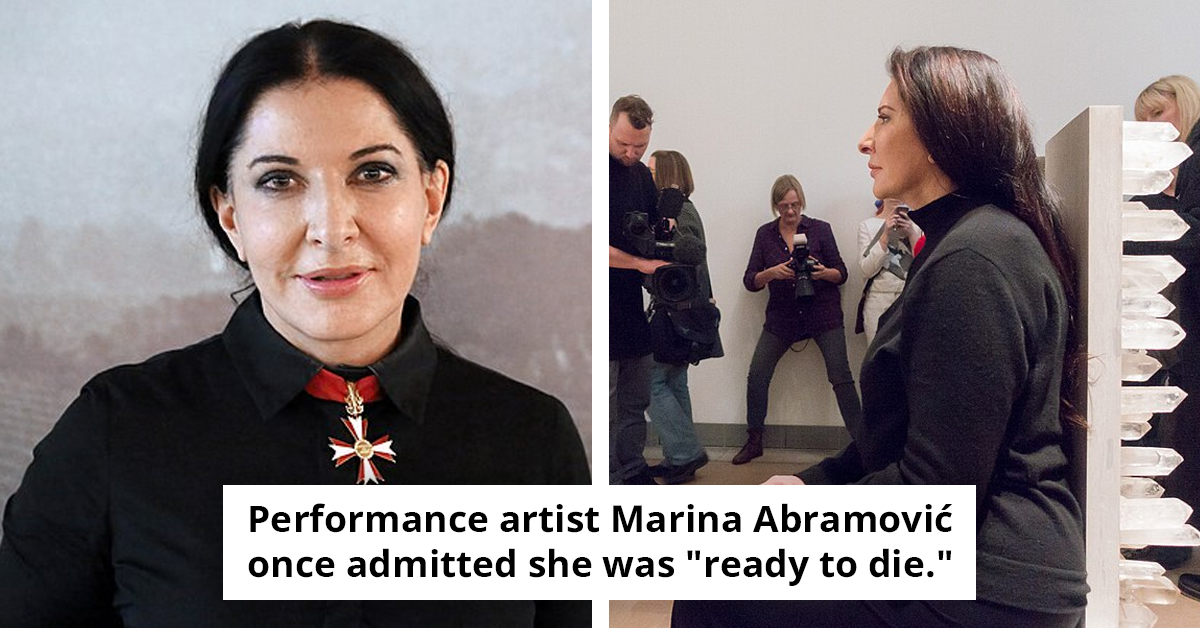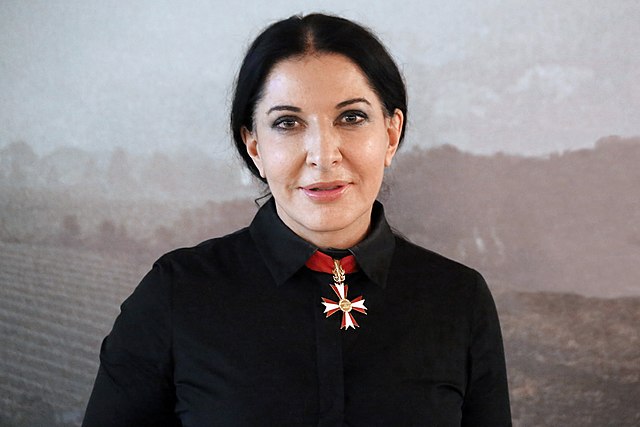Social Experiment Shows What Strangers Do When Given Free Rein
Conceptual artist Marina Abramović described herself as an "object" in the performance piece.

What happens when people are given total freedom with no consequences? It’s a question that has fascinated psychologists, sociologists, and artists for decades. Most discussions about human nature stay theoretical, but in 1974, one artist turned it into a real-life experiment by putting her body on the line.
That artist was Marina Abramović, a Serbian performance artist known for pushing boundaries. In a now-infamous piece titled Rhythm 0, she stripped away all control and placed herself completely at the mercy of the public.
The setup was simple but disturbing. Abramović stood still for six hours in a gallery space in Naples, Italy. In front of her was a table with 72 objects. Some were harmless, a rose, a feather, perfume, and grapes. Others were not: scissors, a scalpel, a metal rod, a gun, and a single bullet.
A note next to her explained the rules. The audience could use any of the items on her however they wanted. She would not resist. She wouldn’t speak. She would take full responsibility.
It began quietly. Many onlookers seemed unsure about how to act. Some gave her flowers or kissed her cheek. One person turned her around, another lifted her arms. It was strange, but not yet violent. There was a nervous, experimental energy in the room, like everyone was waiting to see who would cross the first line.
The performance artist has shared her experiences.
But after about three hours, the tone changed. Someone used a razor blade to slice her clothes off. Others followed. A man cut her skin. Her throat was nicked so another could taste her blood. A loaded gun was pressed to her head. Her hand was placed on the trigger.
Spectators weren’t just passive. Some actively stepped in to protect her. A few wiped away her tears. Others confronted those who had gone too far.
But the damage was already done. Once the atmosphere turned violent, it became clear just how quickly things could spiral when there’s no structure, no accountability.
Throughout it all, Abramović didn’t flinch. She stood still, expressionless, as the public tested the limits of what they could get away with. She didn’t move until the performance ended and the gallery director announced it was over.
 commons.wikimedia
commons.wikimediaThe performance artist Marina Abramović confessed that at one point, she was "ready to die."
When she finally did move, the crowd scattered. People who had just moments ago touched, threatened, or even assaulted her could no longer look her in the eye. As soon as she became a person again, instead of an object, they fled.
Years later, Abramović reflected on what happened. In a video for the Marina Abramović Institute, she said,
“I start moving. I start being myself [...] and, at that moment, everybody ran away. People could not actually confront with me as a person.”She said to The Guardian about the experience: “I was ready to die.”
What Rhythm 0 revealed was a raw and unsettling truth: when people are handed power without responsibility, some will choose cruelty. Not everyone, but enough to make the point
In Abramović’s words, “In your own performances you can go very far, but if you leave decisions to the public, you can be killed.” commons.wikimedia
commons.wikimediaArt critics have long debated the ethical and psychological implications of the piece. Was it bravery or recklessness? A bold social critique or an invitation for abuse?
Whatever the answer, Rhythm 0 is remembered as one of the most extreme and honest explorations of crowd behavior and human nature ever attempted in a gallery.
It wasn’t just performance art; it was a live demonstration of how quickly things can fall apart when the only rule is that there are no rules.

